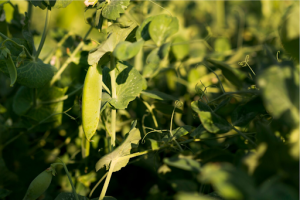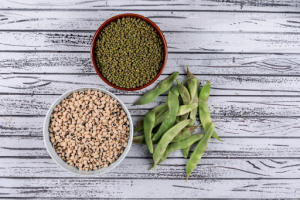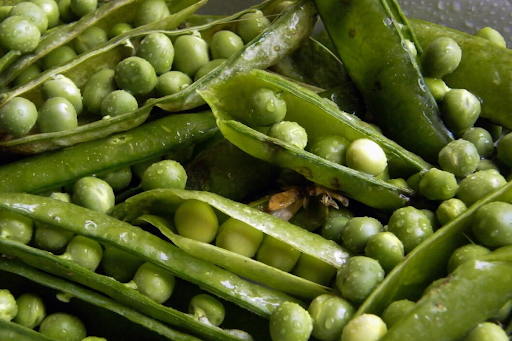Introduction
Field peas are a popular crop grown in many parts of the world, and they come in various types that are both delicious and nutritious. In this comprehensive guide to the different types of field peas, we will explore their unique features and benefits. Field peas, scientifically known as Pisum sativum, include varieties like green peas, yellow peas, and snow peas. Green peas are sweet and perfect for salads and snacks, while yellow peas are often dried and used in hearty soups and flavorful stews. Snow peas, with their flat and crunchy texture, are excellent for stir-fries and add a fresh crunch to your meals.
Understanding the different types of field peas can help you choose the right one for your recipes. Each variety grows best in specific climates and soil types, making them fascinating to learn about for young students. This guide not only explains the types of field peas but also shares fun facts to spark your curiosity about healthy eating and agriculture.
Whether you are looking for easy recipes or want to learn more about gardening, this guide to the different types of field peas will enhance your knowledge of nutritious foods. Get ready to dive into the colorful world of field peas and discover how they can brighten your meals!
Field Peas Production
Field peas are an important crop grown in many countries, and their production is essential for both food and animal feed. This guide to the different types of field peas will help you understand how they are produced. Farmers usually plant field peas in cool weather, as they grow best in spring or fall. The seeds are sown in well-drained soil, and they need plenty of sunlight and water to thrive.
Field peas are not only tasty but also help improve the soil by adding nitrogen, making them a great choice for crop rotation. Once harvested, these peas can be used in various dishes, from soups to salads. Understanding field pea production is important for anyone interested in agriculture and healthy eating. By learning about how these nutritious plants grow, you can appreciate their role in our diets and the environment!
Benefits of Field Pea Cover Crops
Field pea cover crops are planted to improve the soil and help farmers grow better crops. Here are some simple benefits of using field peas as cover crops:
- Soil Health: Field peas add nutrients to the soil, especially nitrogen, which helps other plants grow stronger. Healthy soil means better crops.
- Weed Control: When field peas grow, they cover the ground and prevent weeds from taking over. This means less work for farmers trying to keep their fields clean.
- Erosion Prevention: The roots of field peas hold the soil together, stopping it from washing away during rain. This helps keep the land healthy and fertile.
4 Moisture Retention: Field peas help the soil hold onto water, which is important for crops during dry times.
5 Biodiversity: Growing field peas adds variety to the farm, which can help support.
Growing Peas with Cereals

Growing peas alongside cereals, such as wheat or barley, can be a smart and productive farming method. This guide to the different types of field peas will show you the benefits of this practice. When peas are planted with cereals, they can share resources like sunlight, water, and nutrients from the soil. Peas are legumes, which means they can take nitrogen from the air and add it to the soil, helping the cereal crops grow better. This is important because healthy soil leads to strong plants.
Additionally, growing peas with cereals can help control weeds, reducing the need for herbicides. The combination also provides a varied diet for animals, as both peas and cereals can be used as feed. By understanding how to grow peas with cereals, farmers can improve their harvests while protecting the environment. This method is not only efficient but also beneficial for sustainable agriculture!
A Field Guide to Field Peas
A field guide to field peas is an exciting way to learn about this nutritious crop! Field peas, scientifically known as Pisum sativum, come in several varieties, each with its unique traits. This guide to the different types of field peas will help you recognize them easily. Common types include green peas, which are sweet and perfect for salads, and yellow peas, often used in soups and stews. Another type, snow peas, are flat and crunchy, making them great for stir-fries.
When growing field peas, farmers plant them in cool weather, and they thrive in well-drained soil. Field peas are not only tasty but also good for the soil because they add nitrogen, helping other plants grow. By exploring this field guide, you’ll discover how versatile and beneficial field peas are in farming and cooking. Understanding these different types of field peas can inspire you to enjoy them in your meals!
Peas in Different Pods

Peas come in different types of pods, and each type has its own unique features. Here are the main types of pea pods you might see:
- Green Pea Pods: These are the most common type. They are usually round and filled with sweet, green peas. You can eat the peas fresh, cooked, or even frozen.
- Snow Pea Pods: Snow peas have flat pods with tiny peas inside. They are crunchy and often used in stir-fries or salads. You can eat the whole pod because it is tender.
- Sugar Snap Pea Pods: Sugar snap peas are a mix of green and snow peas. They are plump and sweet, and you can also eat the whole pod. They make a tasty snack or addition to meals.
Understanding the different types of pea pods can help you choose which ones to eat or grow. Each type offers delicious flavors and can be used in many recipes!
Conclusion
In conclusion, understanding the different types of field peas is important for both farmers and anyone who enjoys delicious food. This guide to the different types of field peas has shown you how versatile these plants can be. From sweet green peas perfect for salads to hearty yellow peas used in soups, each variety offers unique flavors and benefits. Growing field peas also helps improve soil health and provides essential nutrients for other crops.
By learning about these various types of field peas, you can appreciate their role in healthy diets and sustainable farming. Whether you decide to grow them in your garden or include them in your meals, field peas are a wonderful addition to your food choices. So, explore the colorful world of field peas and discover how they can enhance your cooking while supporting the environment! Enjoy trying out new recipes and sharing the benefits of field peas with your friends and family!
Read More : We have greenhouses for every grower

